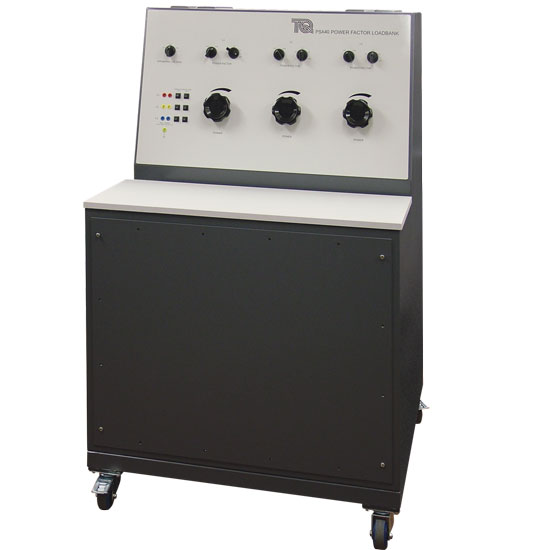Description
A mobile load bank to provide balanced and unbalanced three-phase loads and single-phase loads with variable leading or lagging power factors.
The Power Factor Load Bank is a free-standing and mobile unit. It gives predictable load and power factor characteristics, useful for many different power systems experiments. It also helps to show the principles of a static VAr compensator used in industrial plants and large factories.
The load bank provides three separate inputs: Lines 1, 2 and 3. This allows it to work with single and three-phase circuits. Each line is independent, which allows it to connect with the others as a star or delta load.
The load bank includes three separate banks of resistive, inductive and capacitive loads. They give a choice and combination of types of loads to give unity (resistive only) and leading or lagging power factor. A voltage-selector switch allows the load bank to work with different line voltages for single and three-phase circuits. Each bank (line) may be set to different values, to give an unbalanced load for balanced and unbalanced load tests.
The top of the load bank includes a useful worktop for any additional instruments or for recording results. The load bank has small wheels, for easy mobility. This saves time setting up experiments and clearing the classroom or laboratory after use.
Key features:
- Phase power factors independently adjustable from leading to lagging
- Phase loads independently adjustable
- Maintains the power factor even when the load is adjusted
- For use with single and three-phase circuits
- For use as a three-phase star or delta-connected load
- Mobile unit for ease of use
- Self-contained, needs no external power
- Coloured, shrouded sockets for increased safety
- Creates balanced and unbalanced loads on three-phase circuits
Learning outcomes
When used with other suitable equipment for the Power Systems Laboratory range it can show:
- Balanced loading
- Unbalanced loading
- Varying load with fixed lagging or leading power factor
- Neutral displacement
- Relationship between Watts, VArs and VA
- Power factor correction
- Methods of determining power factor
- Static VAr compensators





